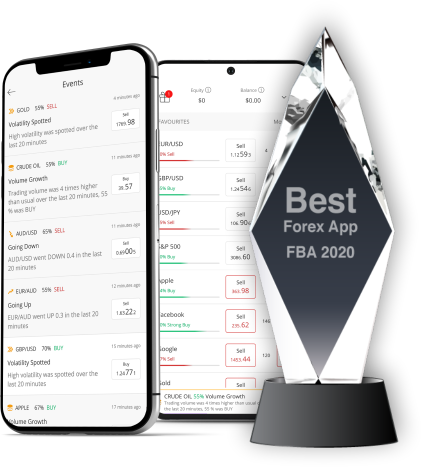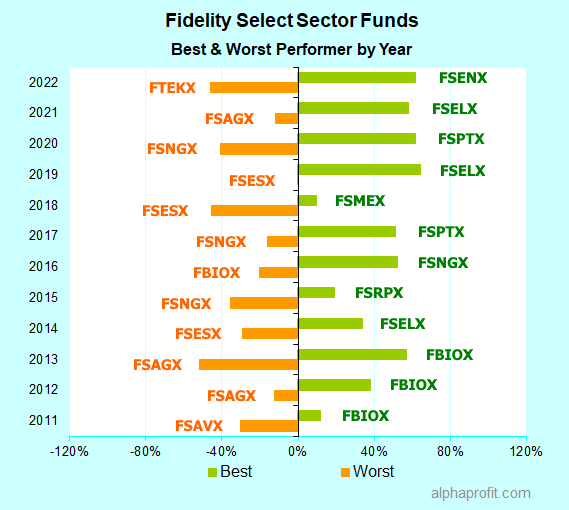
Stock markets are a great place to trade and invest. It's a marketplace that can be used as a swap meeting, auction house, or shopping mall. You will find all kinds of vendors, institutional buyers, and companies listed on stock market exchanges. There are fundamental differences that must be understood before you venture into these markets. This article will highlight some key distinctions between the three types of securities. This is key to your success in the stock exchange.
Common stocks
Common stock investments offer many advantages, including increased liquidity. Common stocks provide investors with financial security. Because they don't have any legal obligations, investors are not worried about anything that may happen outside of the financial investment. While common stock investments do carry a risk of losing more money than they invested, they are also a good choice for investors who want passive income without assuming risky legal obligations. Common stocks also offer investors the opportunity to lock-in higher returns while avoiding legal responsibilities.
Class A stocks
Most people prefer Class A stocks over Class B. This is because the Class A shareholders get more voting power, and other benefits, than their lower-class counterparts. These stocks are protected from bankruptcy and have voting rights. Preferred stocks provide a variety of benefits at a low risk. This makes them popular with conservative investors as well as retirees. However, they tend to be less volatile than common stocks, making them unsuitable for everyone.
Class B stocks
While Class A and B shares may have similar dividend yields, Class B shares are not as dividend-focused. Class B shares typically come with contingent sales charges (CDSCs), that decrease over time, and often disappear after six-years. Investors may not wish to invest more than $100,000 in Class B shares. However, Class B stocks offer many benefits. These differences can be used to your advantage as an active investor and help you choose the right class.

Stocks of the Class C
You should be aware that shares of Class C stock are more expensive than other classes. You may need to pay higher sales loads and other expenses if you choose to invest in these shares. Your Class C shares will not convert into your Class A shares. The annual operating expenses for Class C shares are generally higher than those of their class A and/or B counterparts.
Stocks of class D
There are many classes that may be best for you when it comes to investing in stocks. If you are a long-term investor, class A shares might be the best choice. High sales charges can decrease your returns so you might want to avoid them. While Class C shares cost less than Class A shares but have higher annual expenses than Class A stock, they are still more expensive than Class B shares.
Stocks of the Class E
You don't have to pay a front-end sale charge when you purchase shares of class B shares. The contingent deferred selling charge (CDSC), will apply to the sale of class B shares. This charge is often called the back-end load, and it will gradually decrease over time, eventually eliminating it completely. Class C shares continue to be subject to higher operating costs, 12b-1 fees, and Class C shares.
Stocks of class F
If you're looking for the best deals on common stock, you should consider investing in Class F stocks in the stock market. These shares have unique benefits for startups. First and foremost, they have special voting and protective provisions that give founders additional control over the business. This makes them a good choice for serial entrepreneurs with many investors. However, if you're looking for an easy way to raise capital, it's better to issue ordinary shares of common stock.
Stocks of the Class J
To designate a stock traded on the New York Stock Exchange, the letter J appears at a ticker symbol's end. This designation is temporary and is usually removed after a shareholder vote. This stock is designated as voting stock because it gives shareholders the right to vote on the board of directors or other corporate transactions. To differentiate it from other issuances of the stock, the NYSE uses J as its fourth letter in the ticker symbol.

Class K stocks
There are many choices when searching for the best class-K stock. These stocks are extremely rare, and they often trade at an attractive discount. Here are some tips on how to choose the right stock class K. These stocks are generally less expensive than comparable shares with voting right. These two options can be compared before you decide to invest. But beware of the risk involved: investing in a Class K stock may not be as safe as investing in a comparable stock with voting rights.
Stocks of class Z
Stock market shares of Class Z stocks are available for purchase without any upfront commissions. These mutual funds come with no load fees which is a preferred choice for many DIY investors. Z shares are the result of fund company mergers. For example, Company C may sell no-load money while Company B may sell load funds. Company A has no-load funds added to its fund family after the merger.
FAQ
What is a bond?
A bond agreement is an agreement between two or more parties in which money is exchanged for goods and/or services. Also known as a contract, it is also called a bond agreement.
A bond is usually written on paper and signed by both parties. This document details the date, amount owed, interest rates, and other pertinent information.
The bond is used for risks such as the possibility of a business failing or someone breaking a promise.
Bonds can often be combined with other loans such as mortgages. This means the borrower must repay the loan as well as any interest.
Bonds can also help raise money for major projects, such as the construction of roads and bridges or hospitals.
The bond matures and becomes due. When a bond matures, the owner receives the principal amount and any interest.
Lenders lose their money if a bond is not paid back.
Are bonds tradeable
Yes, they do! Like shares, bonds can be traded on stock exchanges. They have been for many years now.
They are different in that you can't buy bonds directly from the issuer. They can only be bought through a broker.
It is much easier to buy bonds because there are no intermediaries. This also means that if you want to sell a bond, you must find someone willing to buy it from you.
There are many kinds of bonds. Different bonds pay different interest rates.
Some pay quarterly, while others pay interest each year. These differences make it possible to compare bonds.
Bonds are very useful when investing money. For example, if you invest PS10,000 in a savings account, you would earn 0.75% interest per year. You would earn 12.5% per annum if you put the same amount into a 10-year government bond.
If you put all these investments into one portfolio, then your total return over ten-years would be higher using bond investment.
What are the pros of investing through a Mutual Fund?
-
Low cost - purchasing shares directly from the company is expensive. It's cheaper to purchase shares through a mutual trust.
-
Diversification - Most mutual funds include a range of securities. One security's value will decrease and others will go up.
-
Professional management - Professional managers ensure that the fund only invests in securities that are relevant to its objectives.
-
Liquidity: Mutual funds allow you to have instant access cash. You can withdraw the money whenever and wherever you want.
-
Tax efficiency: Mutual funds are tax-efficient. This means that you don't have capital gains or losses to worry about until you sell shares.
-
For buying or selling shares, there are no transaction costs and there are not any commissions.
-
Mutual funds are simple to use. All you need to start a mutual fund is a bank account.
-
Flexibility: You have the freedom to change your holdings at any time without additional charges.
-
Access to information- You can find out all about the fund and what it is doing.
-
You can ask questions of the fund manager and receive investment advice.
-
Security - You know exactly what type of security you have.
-
Control - you can control the way the fund makes its investment decisions.
-
Portfolio tracking - you can track the performance of your portfolio over time.
-
You can withdraw your money easily from the fund.
There are some disadvantages to investing in mutual funds
-
Limited choice - not every possible investment opportunity is available in a mutual fund.
-
High expense ratio. The expenses associated with owning mutual fund shares include brokerage fees, administrative costs, and operating charges. These expenses eat into your returns.
-
Lack of liquidity - many mutual funds do not accept deposits. They must be purchased with cash. This restricts the amount you can invest.
-
Poor customer service. There is no one point that customers can contact to report problems with mutual funds. Instead, you must deal with the fund's salespeople, brokers, and administrators.
-
Rigorous - Insolvency of the fund could mean you lose everything
Statistics
- The S&P 500 has grown about 10.5% per year since its establishment in the 1920s. (investopedia.com)
- "If all of your money's in one stock, you could potentially lose 50% of it overnight," Moore says. (nerdwallet.com)
- Even if you find talent for trading stocks, allocating more than 10% of your portfolio to an individual stock can expose your savings to too much volatility. (nerdwallet.com)
- Our focus on Main Street investors reflects the fact that American households own $38 trillion worth of equities, more than 59 percent of the U.S. equity market either directly or indirectly through mutual funds, retirement accounts, and other investments. (sec.gov)
External Links
How To
How to make a trading program
A trading plan helps you manage your money effectively. This allows you to see how much money you have and what your goals might be.
Before you start a trading strategy, think about what you are trying to accomplish. You may wish to save money, earn interest, or spend less. You might want to invest your money in shares and bonds if it's saving you money. You can save interest by buying a house or opening a savings account. Maybe you'd rather spend less and go on holiday, or buy something nice.
Once you know what you want to do with your money, you'll need to work out how much you have to start with. This depends on where you live and whether you have any debts or loans. Consider how much income you have each month or week. Income is what you get after taxes.
Next, you will need to have enough money saved to pay for your expenses. These include bills, rent, food, travel costs, and anything else you need to pay. All these things add up to your total monthly expenditure.
Finally, figure out what amount you have left over at month's end. This is your net discretionary income.
Now you know how to best use your money.
To get started, you can download one on the internet. Ask an investor to teach you how to create one.
For example, here's a simple spreadsheet you can open in Microsoft Excel.
This is a summary of all your income so far. Notice that it includes your current bank balance and investment portfolio.
Here's another example. A financial planner has designed this one.
It will let you know how to calculate how much risk to take.
Don't attempt to predict the past. Instead, put your focus on the present and how you can use it wisely.